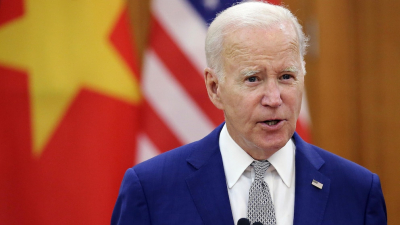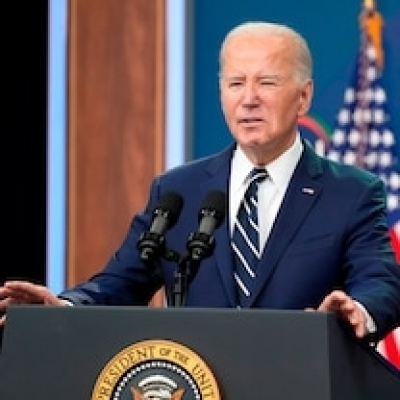Kia's Sedan Renaissance: A Design Revolution Led by Karim Habib
Kia's K4 sedan, unveiled with flair at the New York International Auto Show, stands poised amidst formidable competition, including Kia's own SUV lineup. Yet, as American drivers set their sights on this sleek, compact four-door, the allure of its fastback styling and spacious interior may signal a shift in preferences. "We're not all destined for SUVs... people have diverse tastes, needs, and desires," remarks Karim Habib, Kia's Head of Global Design, in conversation with ABC News. With Habib at the helm since 2019, Kia's design ethos has undergone a transformative journey, epitomized by the "Opposites United" strategy, catapulting the brand to prominence in the U.S.
As Kia garners acclaim for its EV6 and EV9 electric vehicles, Carnival minivan, and Telluride SUV, a growing cohort of Americans now opts for Kia over domestic rivals. In an exclusive interview with ABC News, Habib delves into Kia's trajectory, the impact of autonomous vehicle technology on design, and the enduring appeal of SUVs in American culture.
Q: How would you encapsulate Kia's design ethos?
Karim: Our strategy, "Opposites United," celebrates life's contradictions and surprises. It's about marrying contrasting elements to create richness and beauty, a narrative we weave into our vehicles.
Q: Can you illustrate this philosophy through the K4?
Karim: The K4 embodies our pursuit of agility and elegance. Horizontal fluidity meets vertical rigidity, exemplifying opposites harmonized. It's about blending sleek athleticism with structured refinement.
Q: What vehicle type ignites your passion for design?
Karim: Each vehicle presents unique challenges and joys. Whether crafting an SUV, sedan, or even a pickup, I find fulfillment in the diversity of design opportunities each offers.
Exploring the Creative Realm of Car Design with Karim Habib
Karim Habib, the maestro behind Kia's design narrative, reflects on the multifaceted journey of crafting automotive masterpieces. "Designing a super sports car or a vehicle within a tight budget sparks creativity," he muses. "Being a car designer is a privilege; there's joy in every segment.
In an engaging dialogue, Karim offers insights into the evolution of SUVs and the enduring allure of boxy designs, epitomized by Kia's EV9. "Authenticity is paramount in design," he asserts. "Boxy SUVs endure as they prioritize comfort, safety, and space. Yet, modern innovations infuse a cool aesthetic, paying homage to iconic predecessors like Jeeps and Land Cruisers.
Asked about revisiting designs, Karim chuckles, admitting perpetual tinkering. "Designers perpetually seek improvement," he concedes, playfully eluding specifics about the EV9's hypothetical tweaks.
With Kia's electric lineup captivating American consumers, Karim emphasizes the pivotal role of styling. "Design is integral to our ethos," he affirms. "It enhances user experience, making lives safer, more comfortable, and pleasant.
As for Kia's design trajectory, Karim envisions a future where innovation intertwines seamlessly with consumer-centric principles. "Our aim is to enhance lives through thoughtful design," he concludes. "By prioritizing comfort, safety, and delight, we propel Kia into new realms of automotive excellence.
Karim underscores Kia's commitment to sustainability and affordability, emphasizing the brand's pivotal role as a provider of safe, stylish, and accessible mobility solutions. "Our dedication to environmental responsibility is paramount," he asserts, hinting at Kia's future as a sustainable mobility provider.
In addressing the American market's penchant for trucks and SUVs, Karim affirms Kia's belief in the enduring relevance of sedans. "Variety is key," he notes. "Not everyone desires an SUV. We aim to revitalize the sedan, infusing it with aspiration and allure.
Regarding the burgeoning trend of autonomous driving technology, Karim acknowledges its inevitability. "Autonomous technology necessitates a paradigm shift in design thinking," he reflects. "As we reimagine the space within vehicles, we must also adapt exteriors to accommodate advanced sensors and cameras.
Karim sees this as an evolutionary journey for designers, with the potential to reshape both interior and exterior automotive landscapes. "We're on the cusp of a transformation," he muses, underscoring the ongoing process of adaptation and innovation within the automotive design sphere.
In conclusion, Karim Habib's insights illuminate Kia's forward-looking approach to automotive design and its commitment to sustainability, accessibility, and innovation. As Kia charts its course towards becoming a sustainable mobility provider, Karim emphasizes the importance of variety, aspiration, and adaptability in meeting diverse consumer needs and preferences. With an eye towards the future, Kia remains poised to lead the automotive industry through evolving trends such as autonomous driving technology, ensuring that its vehicles continue to embody safety, style, and functionality for drivers worldwide.











